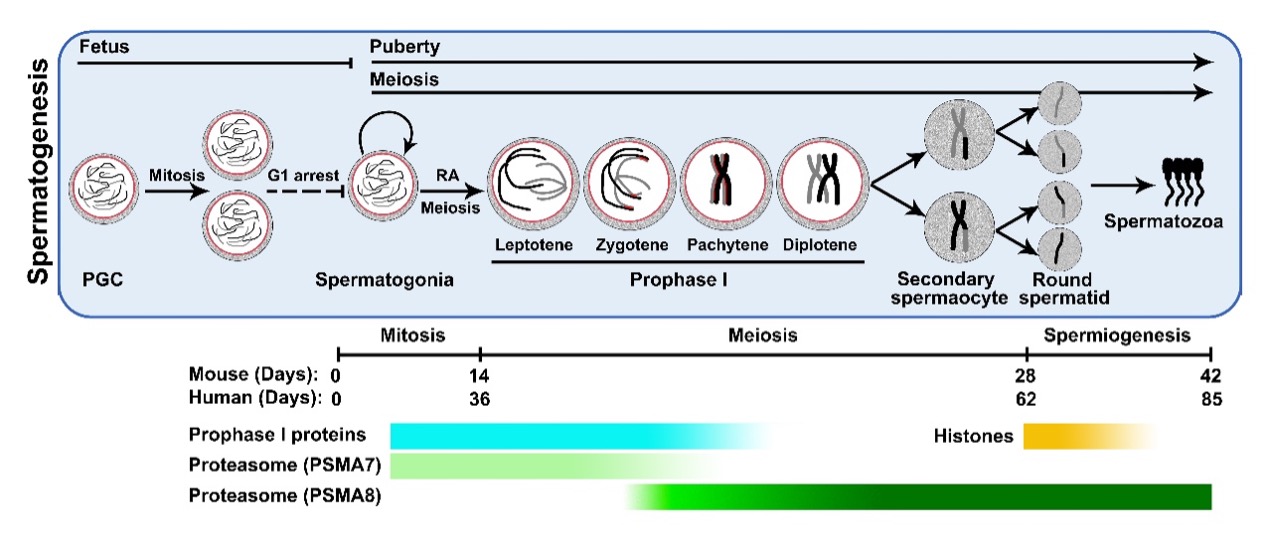Recently, Dr. Qianting Zhang’s lab from Zhejiang University-University of Edinburgh Institute (ZJE) published a review entitled “Ubiquitin-Proteasome System–Regulated Protein Degradation in Spermatogenesis” on Cells. The review systematically discusses the physiological functions and molecular mechanisms of the components of the ubiquitin-proteasome system (UPS) in regulating spermatogenesis, suggesting that exploring the functions of UPS machineries is critical for the improvement of human Assisted Reproductive Technology (ART) and the popularization of Preimplantation Genetic Diagnosis (PGD). ZJE student Yi Xiong also participated in writing this review. Dr. Qianting Zhang is the corresponding author and Yi Xiong, an undergraduate student (2018 Cohort) from ZJE, is the first author of this article.
Spermatogenesis, which maintains sustainable production of male gametes, the spermatozoa, includes more than 40 steps. Spermatogonia, differentiated from the primordial germ cells, undergo meiotic division to form round spermatids, which further mature to become motile, fertile spermatozoa. During this process, male germ cells experience dramatic changes in morphology as well as cellular contents and these changes are tightly regulated through the UPS (Figure 1). According to reports, there are extensive protein degradation events and unique molecular machineries controlling protein homeostasis during spermatogenesis. The UPS plays a broad and precise role in regulating both protein degradation and activity for the step-by-step progression in spermatogenesis. This review includes three main parts: 1. Proteasomes in male germ cells; 2. E3 ubiquitin ligase in spermatogenesis; 3. Protein deubiquitination in spermatogenesis. Exploring the functions of UPS machineries in spermatogenesis provides a global picture of the proteome dynamics during male germ cell production and shed light on the etiology and pathogenesis of human male infertility

Figure 1: The processes of mammalian spermatogenesis. (The degradation timing of regulatory proteins involved in meiotic prophase I and histones as substrates of UPS, as well as the expression pattern of 20S proteasome subunits PSMA7 and PSMA8 are labeled with Gradient bar.)
Access to the publication: https://www.mdpi.com/2073-4409/11/6/1058







